Gastropod Anatomy (Guts, Brains, Blood and Slime)
Gastropod anatomy is a fascinating subject which has both many similarities too, and differences from the typical mollusc anatomy. With so many species – and so much diversity – what is outlined here is only a beginning to whet your appetite for further study.
You may use the links below to navigate directly to the relevant section of this gastropod anatomy page:
- Gastropod Digestive System
- Gastropod Nervous System
- Gastropod Circulatory System
- Gastropod Respiratory System
Slip-slidin’ Away on Gastropod Slime
Before we delve into a deeper understanding of the various parts of a snail’s body, let us take a look at that wonderful substance called slime. Slime is of course NOT a scientific word, the correct term is mucous. All gastropods produce some sort of mucous, as do many other animals including human beings (as well as all other mammals) and fish.
Mucous is not just one substance. Gastropods, particularly terrestrial slugs and snails produce more than one type of mucous. The most commonly seen type of mucous is the slime trail terrestrial gastropods use to allow them to move. This slime is not sticky and consists of about 98% water. It is secreted by the snail’s foot.
Another sort of mucous is produced by the gonad to facilitate reproduction and to encase and protect the eggs in those species that do not brood their eggs. A third sort of mucous is very sticky and is used by snails to glue themselves to plants or rocks during aestivation.
Medical researchers are investigating this sort of mucous in the search for new and better surgical glues with the ability to bind wet, moving tissues without damaging them.
Finally slugs and snails cover their bodies with a different kind of mucous that helps protect them from desiccation (drying out).

Gastropod mucous is a complex matrix of organic and inorganic substances. Snail mucous is composed of “mucin” and water. Mucin contains about 10% glycoprotein polymers – large, complex molecules that link together to give the slime its distinctive properties. Other minor ingredients include hyaluronic acid, proteoglycans, allantoin, glycolic acid and copper peptides,
Slime and Beautification
Terrestrial snail slime has anti-microbial as well as anti-drying properties (part of how it protects the snail’s body). These factors, as well as a claimed but unproven anti-aging property, have made snails and their mucous a hit in the beauty parlor world.
The ancient Greek, Hippocrates recommended using crushed snails (mixed with sour milk) to treat various diseases. In our modern world snail spas can be found in various countries such as Japan, Korea and Thailand. Also the production of snail mucous beauty products from purified and concentrated snail mucous, called “snail filtrate” is a growing industry.
Interest in snail slime as a treatment for skin injuries was stimulated recently as a result of observations made by workers farming edible snails in Chile. They noticed that, after being regularly in contact with the slime during handling the snails, that their cuts and scars tended to heal easily and rapidly. This led to the development of the creams and gels which can now be found on chemist and health food shop shelves.
The Gastropod Digestive System
The digestive system, or rather the digestive tract, of most gastropods begins with the mouth. Food taken into the mouth passes through the pharynx and onto the esophagus before entering the stomach. From the stomach food is passed on to the intestines, which end in the rectum and the anus. The area of the mouth, pharynx and esophagus, including the radula and odontophore, are known as the “buccal cavity”.
The Mouth
The mouth of most gastropods is well developed and in some species may contain jaws which are used to hold food items steady. The mouth also has paired salivary glands associated with it. In many carnivorous species there is also a proboscis. This proboscis can be expanded with blood and then extends beyond the body. The proboscis carries the mouth and the radula with it as it extends, thus facilitating prey capture.
Salivary glands secrete digestive enzymes into the buccal cavity as do the walls of the esophagus. So, as with most animals, digestion begins in the mouth. From the esophagus the food passes into the stomach. In most carnivorous and parasitic species the stomach is quite simple. However in many herbivores, the part of the esophagus immediately before the stomach is enlarged to form a crop. In some terrestrial slugs and snails this may even replace the stomach.
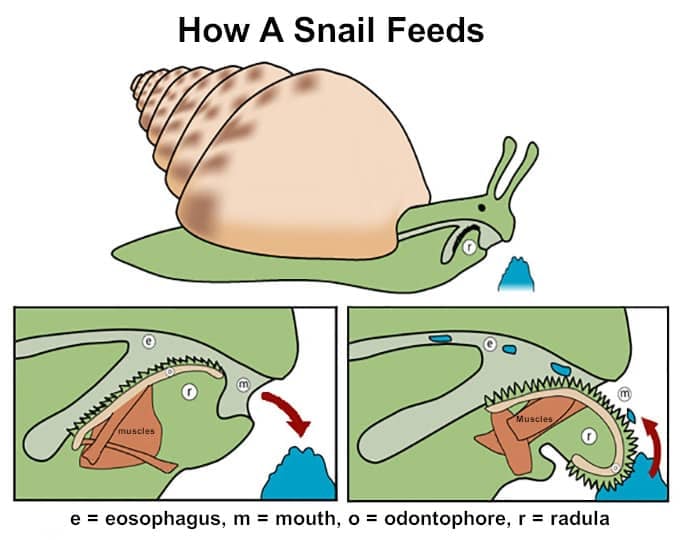
The Stomach
In many aquatic herbivores the stomach has evolved into a gizzard that helps to grind up the food. Unlike a crop, which is thin-walled and serves mainly just to contain food, a gizzard is a tough muscular organ that may contain abrasive materials such as sand. This combination of muscular action and abrasive materials grinds the food particles down into finer pieces.
Many other animals possess a gizzard including earthworms, some crustaceans and fish as well as many birds and various dinosaurs.
In Gastropods the food particles are usually embedded in a string of mucus produced in the mouth. The back part of the stomach (furthest from the esophagus), is called the “style sac”, and is lined with cilia. These cilia beat in a rotary motion, pulling the food matted mucous string forward in a steady stream from the mouth.
The Intestines
From the stomach the food passes into the intestines. These are usually long and loop around the internal space of the visceral mass. The intestines are longer in herbivorous species than in carnivorous ones. The gastropod intestine ends in the anus which is located above the head, something which facilitates life in a shell with only a single opening (see the gastropod shell).
The Anatomy of Gastropod Excretion
In all gastropods metabolic wastes are filtered out of the haemolymph by the nephridia, which act like kidneys. In the more primitive gastropods the nephridia are paired as in most other molluscs. However in the majority of gastropods the right nephridium has been lost. Meaning modern slugs and snails have only one nephridium.
The gastropod nephridium connects with the haemolymph in the venous sinus, either directly, or via a small duct called the renopericardial canal. Waste products are passed out of the nephridium into the mantle cavity along a ureter. This ureter is longer in terrestrial species than in aquatic species and ends near the anus.
The nephridia/um have different additional roles in gastropods from different habitats. In freshwater species, the nephridium has to work to maintain the animal’s osmotic balance because the body fluids are more ionic than the freshwater they live in. This is not necessary in marine species because the external and internal fluids are much more similar – ionically.
In terrestrial gastropods water conservation is a major issue. In order to conserve water, they secrete nearly crystalline urine. This crystallinity is achieved by the ureter which actively extracts water from the urine released by the nephridium.
The Gastropod Nervous System
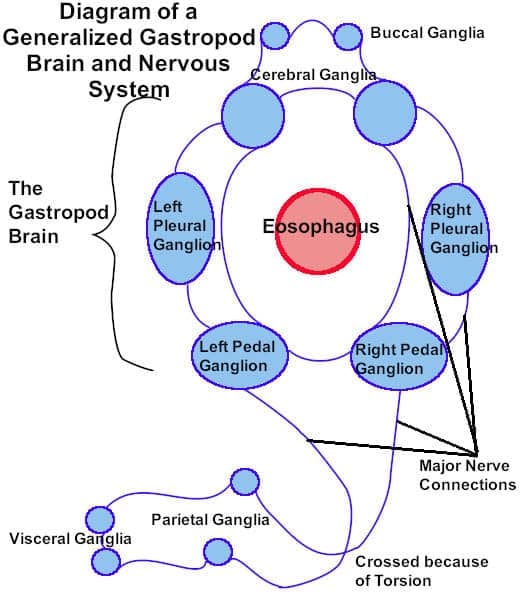
The gastropod nervous system is quite well developed. It consists of 6 pairs of ganglia connected by major nerve chords. There are also minor nerves connecting to organs and muscles.
- Buccal Ganglia
- Cerebral Ganglia
- Pleural Ganglia
- Pedal Ganglia
- Parietal Ganglia
- Visceral Ganglia
The larger three sets of ganglia, Cerebral, Pleural and Pedal together comprise the gastropod brain. These are located near the head of the animal around the esophagus.
The Buccal ganglia control the buccal cavity and the operation of the radula. The Cerebral ganglia are responsible for eyes, tentacles and other sensory organs of the head. The Pleural ganglia control the the mantle and are linked to the mantle cavity while the pedal ganglia control the foot.
Lastly the parietal ganglia operate the ctendia or gills and the sense of smell; and the visceral ganglia connect to the remaining organs of the visceral mass.
Snail Intelligence
Snails have memories. Some snails, for instance Pond Snails (Lymnaea stagnalis) can remember both where food has been good and where danger has been encountered. Strangely researchers have found that within a species, individuals from different locations can be better or worse at remembering things. After strong entraining, the difference can be remembered for a day in weak-memoried snails, but for a week in strong memoried snails.
Even more obscurely the same researchers have found that stress can negatively affect neural abilities in snails. The ability of Pond Snails (Lymnaea stagnalis) to form memories is reduced when they are stressed. However this only seems to affect those snails which had better long-term memories.
Finally, while I was researching intelligence in gastropods I came across an article in an old book in which the writer describes how a physically handicapped girl who kept pet snails found they would respond to her voice. In the report the writer states that the girl’s ability to call the snail out was demonstrated on a number of occasions to different people. The most interesting thing about this is that modern science tells us that snails are deaf. They have no hearing organs at all. Which leaves us with a mystery.
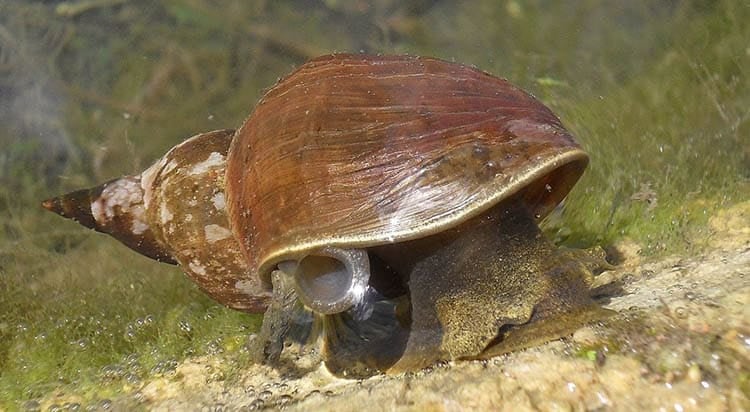
Senses and Sensory Organs of the Gastropoda
Snails have eyes, but they don’t see images. Their eyes are only to allow them to detect dark and light and changes in light intensity. This can be very useful when most predators approach you from above. A sudden reduction in light intensity will indicate that a predator is approaching.
Chemoreception, including the senses of smell and taste are extremely important to all gastropods. Marine gastropods have chemoreceptors on two specialized organs that look like short horns or tentacles, these are called rhinophores. Some species also have chemoreceptors near their mouth and scattered across their skin as well.
In terrestrial gastropods the main chemoreceptors are on the tips of the four tentacles. This allows them to have their sense of smell organs raised above the level of their body. Most terrestrial slugs and snails are able to track suitable food items using chemoreception.
Species of Euglandina, a genus of predatory land snails have evolved unique, mobile lip extensions that detect mucus left by potential prey. Using this ability they can track their prey. This ability is an evolution of the normal gastropod sense of smell, which is atrophied in Euglandina.
Gastropod sensory apparatus includes statocysts in species which are regularly mobile, but these are often absent in sessile species. Statocysts allow the animal to determine up from down and thus maintain a sense of balance.
Marine species also often possess an osphradium, an olfactory organ located within the mantle cavity and connected to the respiratory system, which allows them to test the quality of water flowing through their mantle cavity.
The Gastropod Circulatory System, Heart and Blood
Like all molluscs, gastropods have an open circulatory system. Meaning their blood (actually haemolymph) is pumped through through several major blood vessels into, and through, various ‘sinuses’. In doing so, it bathes the tissues directly in the haemolymph so that gaseous exchange can occur.
The haemolymph of gastropods uses haemocyanin as the gas carrier molecule. Haemocyanin is a copper bonded protein (two copper atoms to bind each O2 molecule). It is a clear liquid when without oxygen and is blue in colour when oxygenated. Unlike the case of haemoglobin (as in people) the Heamocyanin molecules are not linked to special blood cells (erythrocytes), but float freely in the haemolymph.
The gastropod heart lies within a pericardial membrane and is usually situated in front of the nephridium (kidney). Except in a few primitive cases the gastropod heart has only one auricle and one ventricle. This is because the torsion induced loss of the right side ctenidia (gill) results in the loss of the right auricle. Haemolymph flows from the left ctenidium into the left auricle, which pumps it into the ventricle. The ventricle then pumps the blood out along the aorta, which may be singular or paired.
The aorta(s) soon branch out into smaller vessels which deliver the haemolymph to the sinuses. In the foot the blood vessels branch out repeatedly getting smaller and smaller in a manner that more resembles a closed circulatory system than an open one.
As it nears the ventral surface of the foot the haemolymph is collected in the venous sinus. This is actually a fine network of discrete spaces delimited by the muscle and connective tissue, rather than a single open space. From the venous sinus the haemolymph flows into two large veins which eventually unite and carry the haemolymph to the right auricle.

Gastropod Respiratory System (how do snails breath?)
Respiration occurs in aquatic gastropods when water passes across various parts of the body. Usually these parts are ctendia (comb like gills), but in others it can simply be the skin. The oldest and simplest gastrododa, like Limpets and Abalone, still possess the basic form of mollusc breathing equipment. Meaning they have two feathery gills called Ctenidia. These ctendia are usually located within the mantel cavity.
In limpets they are located at the side of the body, as in the Chitons they are often confused with. Whereas in sea slugs the original ctendia (gills) have been modified and are now external.
Yes, those beautiful feathery projections, that add so much to the beauty of the nudibranchia, are their gills. Nudibranchia means ‘naked gill’.
Some Limpets, and most of the rest of the gastropoda have lost the right, and in some cases both ctenidia. The most common situation is in marine snails with a coiled shell. Simply because these are the most numerous in terms of species. In this case one ctenidium remains and is retained. This is the left side ctenidium.
To facilitate respiration, water is drawn in on the left hand side of the animal and passes out on the right hand side. This ensures that the water passing over the ctenidia is always fresh and oxygenated. As the anus is also on the right side of the body, waste products from it are flushed out along with the carbon dioxide loaded water.
Pulmonate Gastropods
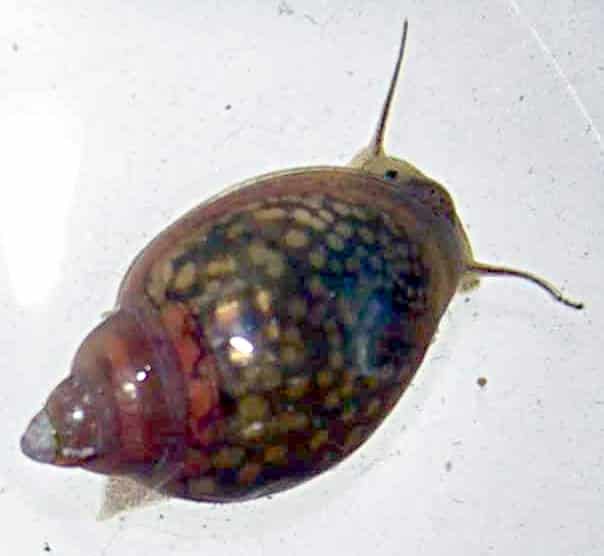
Obviously terrestrial gastropods cannot breath through a gill as they do not live in water. In these species the ctendia have both been lost and have been replaced with a kind of lung called a ‘pallial lung’. This pallial lung is a special extension of the mantel cavity. The upper surface is threaded with blood vessels. The animals breath muscularly through a tube connecting to the outsid world on the right hand side of the body. This breathing tube is called a ‘pneumostone’. Gastropods with a lung are called pulmonates. Pulmonates is a general, not a taxonomic grouping.
Breathing Fresh Water
Freshwater gastropods are the most diverse gastropods in terms of breathing adaptations. Some species are pulmonates and need to return to the surface on regular occasions to breath fresh air. Such species can close off their pneumostome while under the water. Members of the family Physidae are all fresh water, air breathing, pulmonate gastrodods.
Other freshwater snails are not pulmonates and these groups breath water through ctenidia in the same manner as their marine cousins. The invasive New Zealand Mud Snail (Potamopyrgus antipodarum) is an example of a freshwater snail that breaths through a ctenidium (gill).
Further Diversity In Gastropod Anatomy
Some small gastropods, for instance species in the genus Lepeta use the whole mantel cavity for respiration and do not possess ctenidia or lungs. Many small freshwater limpets, especially those inhabiting colder waters respire in this way. Oxygen diffuses from the water to the snail’s body directly.
Another unusual group are the sea butterflies. These amazing and rather beautiful creatures use their general body surface as a respiratory surface.
Some freshwater snails, such as the Apple Snails in the family Ampullariidae from South America, possess both gills and a lung. To accommodate both types of respiratory structures the mantle cavity is divided into two separate sections. This adaptation allows these snails to be amphibious. Females of the highly invasive Golden Apple Snail, Pomacea canaliculata, (an aquatic pulmonate snail with an operculum) can leave the water to lay their eggs in vegetation above the water line.
These snails also have a snorkel-like syphon they can extend to the surface of the water to breath air. This siphon is often longer than the length of the snail’s body.
Finally some freshwater snails, such as lymnea stagnalis, while being pulmonate and not possessing a ctenidium can augment their oxygen supply by filling their pallial cavity with water and letting gas diffuse through the surface of the pallial cavity.
Well, that’s it for now, I hope you have enjoyed this brief introduction to gastropod anatomy!
Image Credits:- Snail Anatomy by Jeff Dahl; Lymnaea stagnalis by Chaoborus; – license CC BY-SA 4.0, Nembrotha kubaryana by Nick Hobgood; – License CC BY-SA 3.0; Physella acuta by N Yotarou – license CC BY-SA 2.5


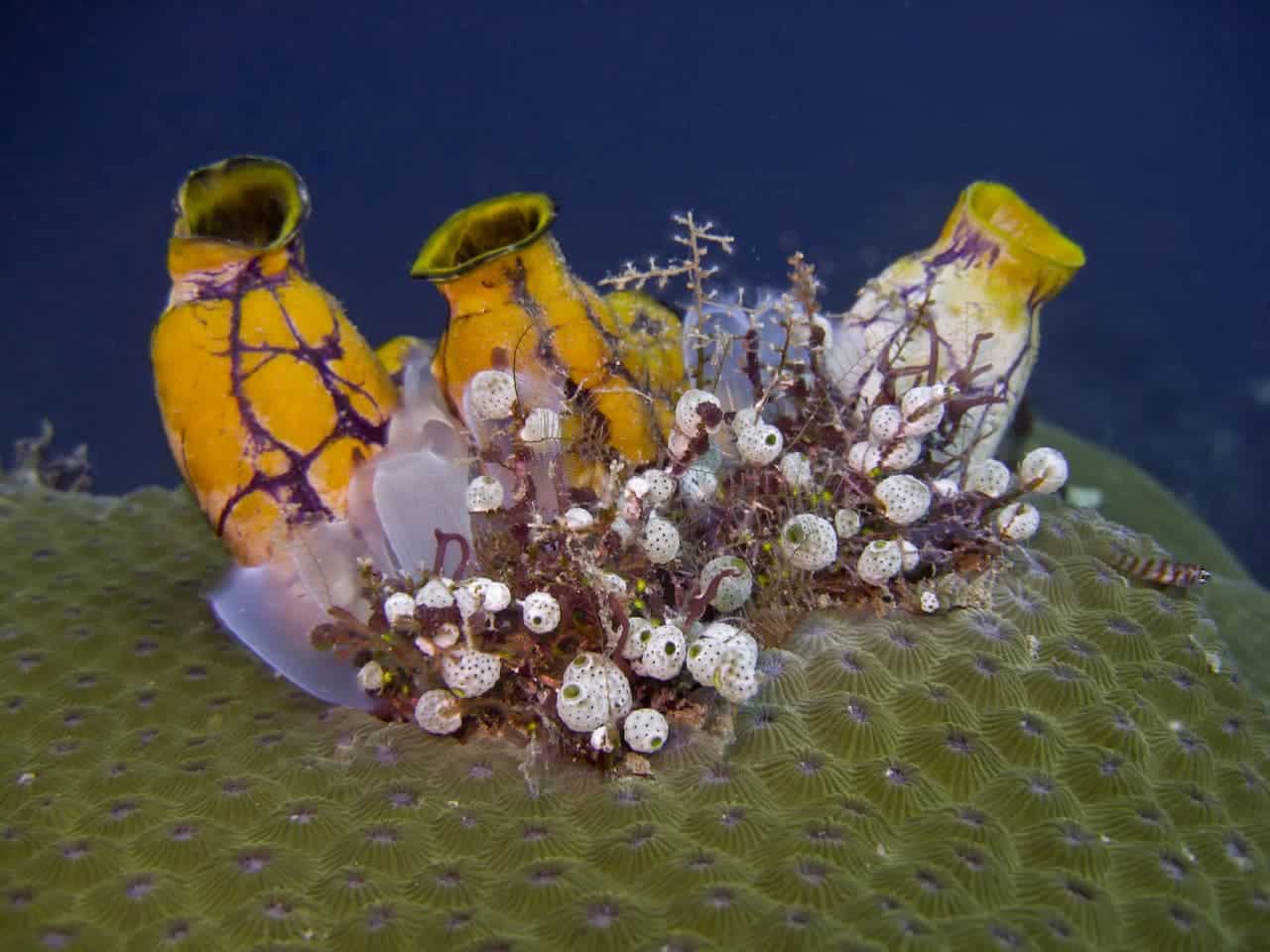
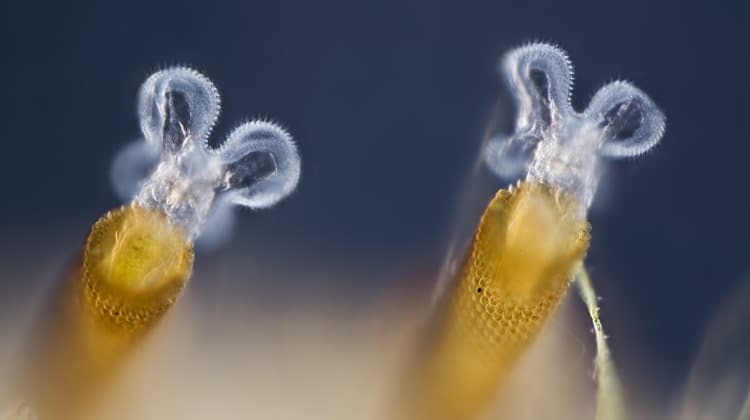
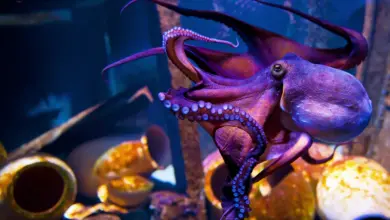
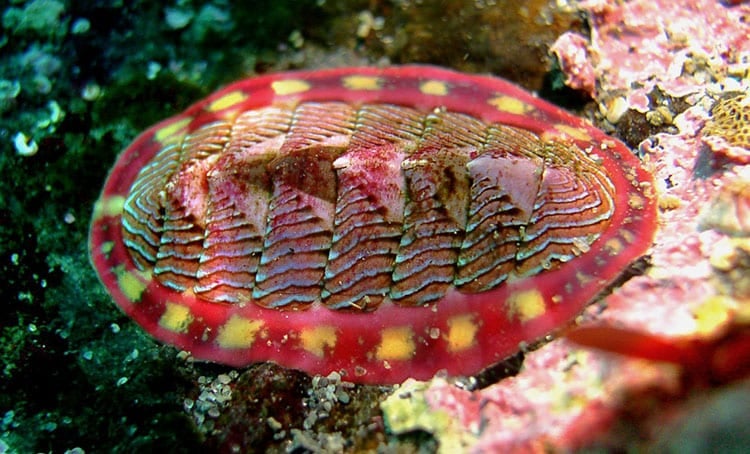
Awesome article! I love snails!!
Can you answer for me what the muscle or part of the body that keeps them closed tightly inside their shell is called? (as when they sense a predator and withdraw into their shell)
Thank you!
Generally speaking it is the columellar (retractor) muscle, a large muscle that connects to the columellar internally and runs down through the foot to the operculum. Dale (1974) gave a detailed account of head–foot retraction into and emergence from the shell in H. pomatia. Contraction of the columellar (retractor) muscle, is aided by contractions of other muscles, the tentacular, buccal retractor and pedal muscles. Thus, in this common edible snail, it is a team effort on behalf of the snail’s muscles. However, emergence (but not retraction) is greatly facilitated by hydrostatic pressure as well.